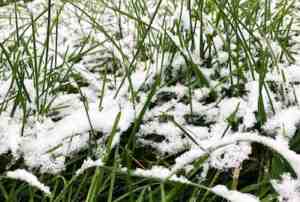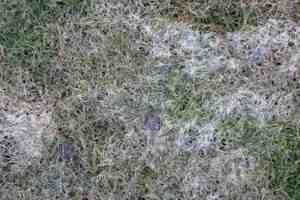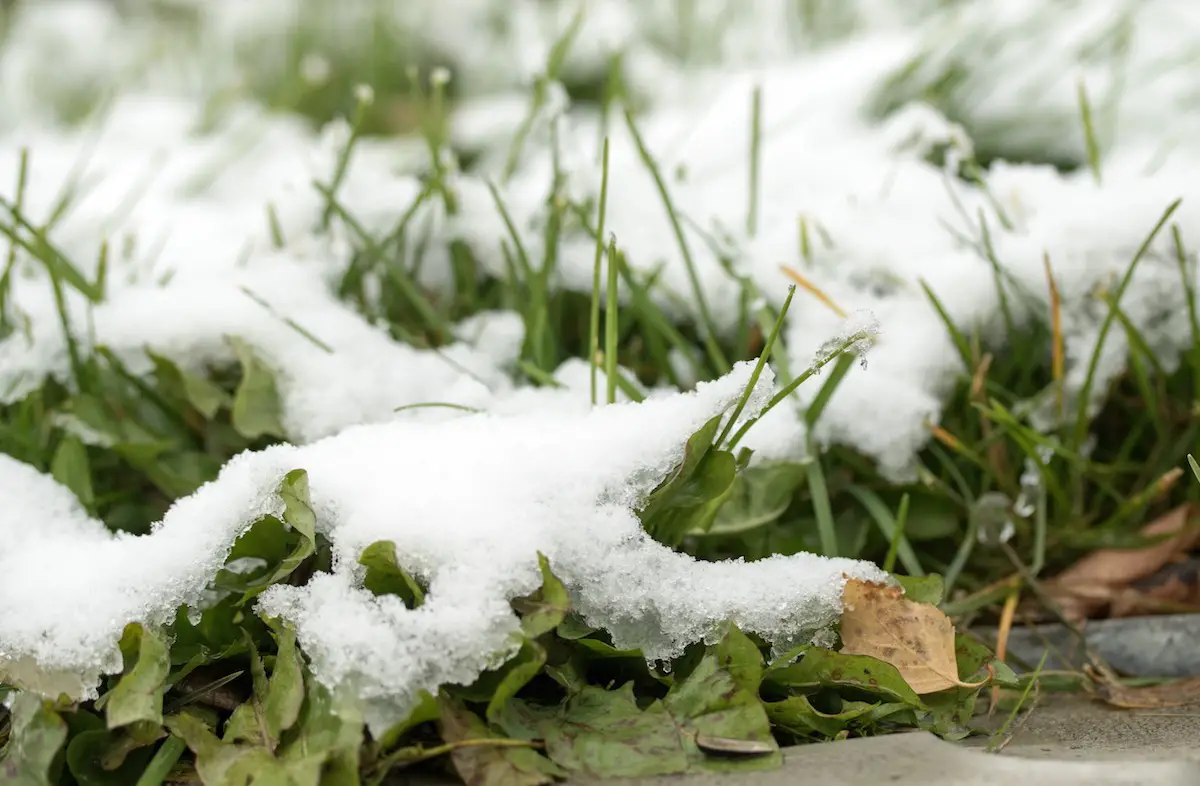Getting Rid of Snow Mold On Grass
Nothing is more frustrating than spending so much time on a beautiful lawn only to have it turn brown and patchy come spring. One of the biggest culprits for this problem is snow mold. What is snow mold? Snow mold is a fungus that grows on lawns during the winter. It can cause significant damage to your lawn, so it’s important to know how to get rid of it.
Snow mold on the lawn-how to get rid of it:
The first step to getting rid of snow mold is to rake up any dead grass or leaves that are on your lawn. This will help to prevent the mold from spreading. Once you have raked up all of the debris, you will need to treat the affected areas with a fungicide. Be sure to follow the directions on the label carefully.
After you have treated the affected areas, you will need to water your lawn deeply. This will help to prevent the snow mold from coming back. Watering in the morning is best so that the sun can help to dry out any moisture on the grass.
Now that you have the short answer, let’s dive deeper so you have all your questions answered. In this blog post, we will discuss what causes snow mold and how to care for your lawn during the winter months. We will also provide tips on how to prevent snow mold from forming in the first place!

What Causes Snow Mold?
There are two main types of snow mold: gray snow mold and pink snow mold.
- Gray snow mold is the most common type and it affects both cool-season and warm-season grasses.
- Pink snow mold only affects cool-season grasses. Both types of snow mold are caused by fungi that grow in cold, wet conditions.
Snow mold often forms when the temperature is between 32 and 50 degrees Fahrenheit and there are at least four inches of snow on the ground. The fungi that cause snow mold thrive in these conditions because they can stay moist and protected from the wind.
A Vulnerable Lawn
Not all lawns are susceptible to snow mold, but if your lawn is already stressed, it may be more likely to develop the fungus. Some of the most common reasons why lawns are stressed include:
- Poor drainage
- Lack of sunlight
- Drought
- Excessive thatch
The best way to ensure you don’t have a vulnerable lawn is to take great care of it and do all the necessary prep before winter arrives. Some types of grass are more susceptible than others, however, so even if you have a well-maintained lawn, there is still a chance that snow mold could form. The following types of grass are the most susceptible to snow mold:
- Tall fescue
- Kentucky bluegrass
- Perennial ryegrass
- Fine fescue
How to Prevent Snow Mold
The best way to prevent snow mold is to have a healthy lawn. A healthy lawn is better able to resist the fungus. You can help keep your lawn healthy by:
- Mowing at the proper height
- Fertilizing
- Watering deeply and regularly
- Clearing away debris
If you live in an area where snow mold is common, you may also want to consider using a fungicide on your lawn before winter arrives. This will help to prevent the fungus from taking hold.
Signs of Snow Mold
If your lawn has never had snow mold, you may not know what it looks like or the warning signs to watch for. Here are some common signs of snow mold:
If you see any of these signs on your lawn, it’s important to take action right away. The sooner you address the problem, the better chance you have of saving your lawn.

Getting Rid of Snow Mold
Once you have identified that your lawn has snow mold, it’s important to take action to treat it. The sooner you treat the problem, the better chance you have of saving your lawn. Here is a detailed step-by-step guide on what you need to do to get rid of snow mold:
- Remove any dead grass or leaves from your lawn. This will help to prevent the mold from spreading.
- Clear away as much of the debris as possible, using a rake or a leaf blower. If you have a lot of debris, you may need to use a tractor or a lawnmower to clear it away. Be sure to dispose of the debris in a bag or bin so that it doesn’t spread the mold to other areas.
- If you have a small area of lawn affected by snow mold, you can treat it with a fungicide. Be sure to follow the directions on the label carefully. Apply the fungicide evenly over the affected area and water it in a well.
- For larger areas, you may need to hire a professional lawn care company to treat the problem.
Long-Term Effects 0f Snow Mold
While snow mold is not a deadly disease, it can cause some long-term damage to your lawn. If the fungus is left untreated, it can kill the grass in affected areas. In severe cases, it can even kill the entire lawn.
Snow mold can also lead to other problems, such as:
- The growth of weeds
- Thatch build-up
- Compaction
- Soil erosion
Preventing snow mold is the best way to protect your lawn. But if you do find yourself dealing with it, be sure to take action right away to prevent further damage.
Caring For Your Lawn During Winter
When the temperatures start to drop and the snow starts to fall, it’s important to take care of your lawn so that it can stay healthy all winter long. Here are some tips for caring for your lawn during winter:
- Clear away any leaves or debris that have fallen on your lawn. This will help to prevent disease and mold from taking hold.
- Aerate your lawn in the fall to help improve drainage and prevent compaction.
- Apply a layer of mulch to your flower beds to help protect them from the cold.
- Keep an eye on the forecast and take steps to protect your lawn if a deep freeze is expected. This may include covering it with a tarp or burlap.
Snow mold can be a big problem for lawns, but by taking proper care of your lawn and being proactive, you can prevent it from taking hold.
Will Snow Mold Go Away In The Spring?
Yes, snow mold will go away in the spring. As the temperatures warm up and the snow melts, the mold will die off. However, this doesn’t mean that your lawn is in the clear. The damage from snow mold can last long after the fungus is gone. Be sure to take steps to repair any damage that has been done.
Will Snow Mold Come Back After Treatment?
Now that you know all about snow mold and how to get rid of it, you may be wondering if it will come back next winter, even after treating it. The answer is yes, snow mold can come back after treatment. While this is frustrating, you can follow the steps above to care for your lawn and prevent the snow mold from growing.
Related Questions
Q: Why is it called snow mold?
A: The name “snow mold” comes from the fact that the fungus often appears after a heavy snowfall. The snow helps to insulate the fungus, allowing it to survive and grow.
Q: Will drying out my lawn prevent snow mold?
A: Drying out your lawn will not prevent snow mold. In fact, it can actually make your lawn more susceptible to the fungus. The best way to prevent snow mold is to have a healthy lawn. A healthy lawn is better able to resist the fungus.
Q: Can I treat my lawn for snow mold myself?
A: Yes, you can treat your lawn for snow mold yourself. If you have a small area of lawn affected by snow mold, you can treat it with a fungicide.
Q: Is snow mold harmful to pets?
A: No, snow mold is not harmful to pets. However, if your pet ingests any of the molds, it may cause vomiting or diarrhea. If you are concerned about your pet’s health, please consult your veterinarian.
Final Thoughts
Snow mold can be a big problem for lawns, but by taking proper care of your lawn and being proactive, you can prevent it from taking hold. If you do find yourself dealing with snow mold, take action right away to prevent further damage.
To summarize, snow mold is a type of fungus that can grow on your lawn during winter. It’s important to take steps to prevent snow mold, as it can cause long-term damage to your lawn.
Caring for your lawn during winter is important to prevent snow mold and other problems. Be sure to clear away any leaves or debris, aerate your yard, and apply a layer of mulch to flower beds. If you do have snow mold on your lawn, you can get rid of it by applying a fungicide.
Thanks for reading! I hope this article was helpful in teaching you about snow mold and how to get rid of it. Good luck!

